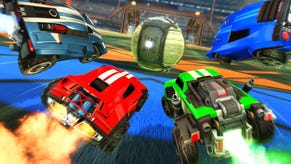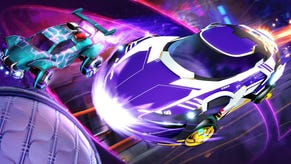Face-Off: Rocket League
Xbox One completes the set - but can it match the brilliant PS4 and PC releases?
Rocket League is one of the great surprises of this console generation; a regular, high-octane evening fixture for its many PS4 and PC fans since arriving eight months ago. Built on Unreal Engine 3, this is precisely the type of arcade experience we'd have expected to play on Xbox Live last generation - and yet until yesterday, no Xbox One version was available. We're pleased to report the wait has been worthwhile though, and developer Psyonix turns in a superb rendition of the game on Microsoft's machine.
For starters Xbox One runs at a native 1920x1080 resolution - just like PS4 - and this qualifies it for crisp views across the playing field. One snag is that there's no post-process anti-aliasing in effect on either console version, accounting for the rougher appearance to the game. Despite the high pixel count, each stadium's grass shaders and neon lights produce a lot of pixel crawl in motion - and both consoles end up matching the look of PC with no anti-aliasing enabled.
Image quality is best described as 'sharp' on console, but it's intriguing to see the path not taken - and on PC we can do exactly that. Three quality presets for FXAA are on show, plus an MLAA mode (a similar post-process filter that attacks high contrast points within a frame). Unfortunately, even the high FXAA setting produces far too much residual blurring - fine specular details on the cars and grass take a sharp hit with any mode, and the results simply don't flatter Rocket League's aesthetic.
In the end, Psyonix makes the right call regarding image treatment on PS4 and Xbox One. Having no AA whatsoever is the lesser of two evils in this case, and though visual noise is very apparent, at least visibility across the stadium is kept high. Avoiding post-process techniques like this also minimises the rendering time per output frame (if only by 1-3ms), which arguably sits better with a game so reliant on quick reactions.
Xbox One is also on par with other formats in its core graphics settings. The key settings match the PC title, from texture map quality to ambient occlusion, with the Microsoft console retaining the title's lengthy column of lighting effects (including a lovely, dusk flittering of light shafts on certain stages). Complex maps like Mannsfield and Wasteland are identical in geometric detail - and it's only minor anomalies in lighting that really set Xbox One apart. In the main menu screen for example, a banding effect appears on the car's shadow not seen on other formats. Fortunately, in-game shadows run without any similar issues.
One dividing point between the three concerns texture filtering quality. Xbox One matches the quality of PC's default method, where curiously there's no native option to toggle between modes. However, PS4 stands alone with clear signs of a bilinear approach, producing a visible filtering cascade on the ground as we drive forward. All versions suffer from this to an extent, but matching shots show Sony's machine producing clear filtering lines across the ground - and as a result textures in the distance produce more visual noise than Xbox One and PC.
Besides the difference here, all three versions are very tightly matched visually. A 60fps target is also very well met on Xbox One, and performance is well rounded across most stages with the v-sync toggle enabled. Even fast-paced 3v3 matches on Mannsfield in stormy weather run at a near-faultless 60fps, with only a single frame blip to show for detonating an enemy car. In this case it's a very solid match for PS4 - a surprising turnout given its parity elsewhere.

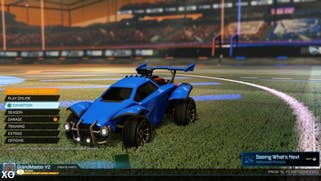
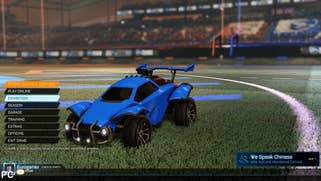
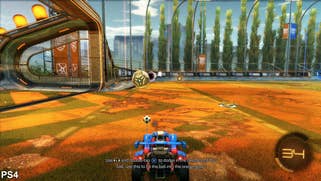
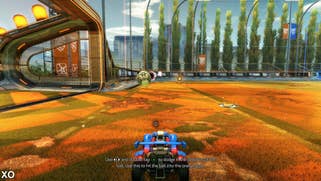
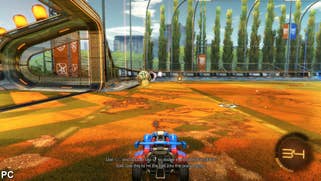
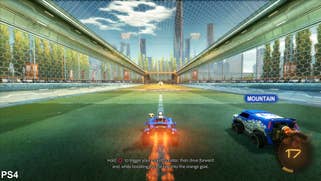
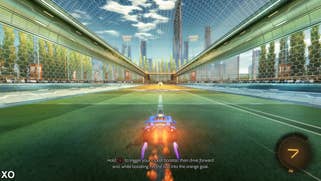

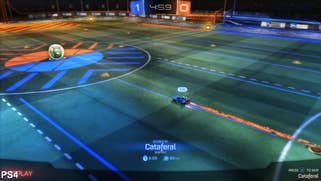
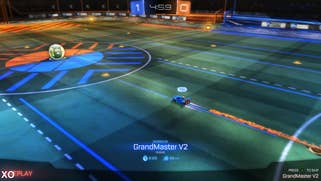

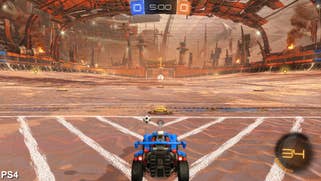


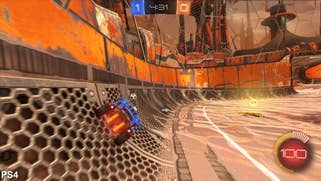
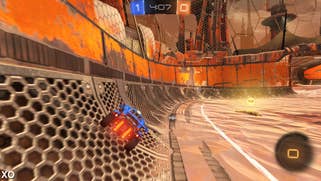
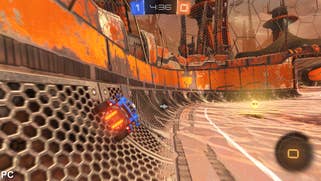
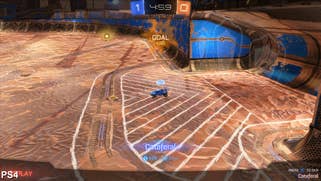
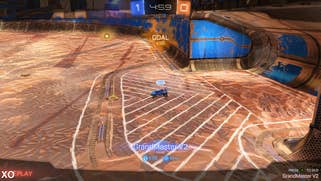
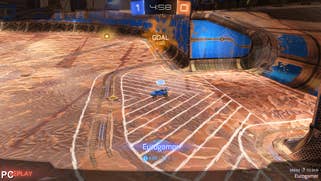
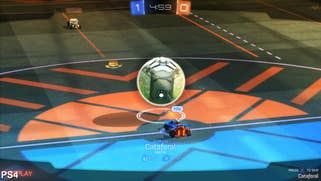
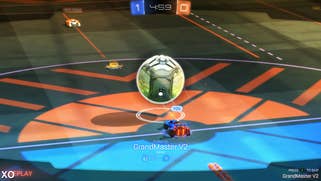
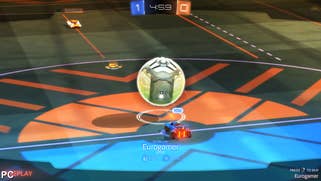
With full 1080p output, visual settings that closely match PC's best, and with a fairly tight grasp on 60fps, Xbox One has the full package here. However by comparison to PS4, there is a compromise in the game's performance level, depending on the stage chosen. The Utopia Colosseum is a particular culprit for sub-60fps drops in our tests, where lurches to 50fps and under are triggered by heavy bursts of alpha effects. While drops like this also feature on PS4, it's rarely as dramatic as on Xbox One when pressed - though for the majority of play, it's a very robust 60fps performer on both platforms.
Incidentally, this is very good news for the PS4 version. Looking back to our original 3v3 tests on the console from last July, frame-rates were clearly sub-optimal at the game's launch. Drops proved much worse than anything seen on either console shown in current tests, and lurked at 35-50fps - dropping even lower at points. Clearly, at some point between Rocket League's initial release on PS4 and its latest patch 1.12, the game has been optimised for a far better lock on 60fps. It rarely misses a beat now, and alongside Xbox One, these two console versions put in a sound delivery of the game
As an aside, Rocket League retains some of PC's graphics options on console, allowing us to toggle both v-sync and weather effects. Out of curiosity, we tested the first setting on Xbox One, running a replay of a taxing game with clear frame-rate drops with v-sync enabled and disabled. The idea here is to see if any gain can be made to frame-rates, and as it turns out, it does reduce the extent of its drops by 1-2fps overall. It lets frames to render out in a partial state, causing tearing to the top third of the screen during alpha effects. Controls can feel much smoother with the v-sync disabled, but unfortunately, the bigger lurches down still show full frame drops that produces a similar stutter effect. It's worth testing for yourself, but the advantages were perhaps not as pronounced as we had hoped - and given Xbox One's typical adherence to 60fps it's not strictly necessary.
It's a happy ending for Rocket League on console, and we're thrilled with Xbox One's final delivery of the game. It strikes the same chords as PS4 in its resolution and visual settings, barring points in texture filtering and a few odd lighting glitches, while also hitting its 60fps target. Exclusive cars also feature on Xbox One to make up for lost time, such as the tank-like Armadillo from Gears of War and the classic Warthog from Halo. Each is a fun extra, but crucially the core of the game is much the same as PS4 and PC - and it's a fine conversion for those who have been holding off until now.




.jpg?width=291&height=164&fit=crop&quality=80&format=jpg&auto=webp)

